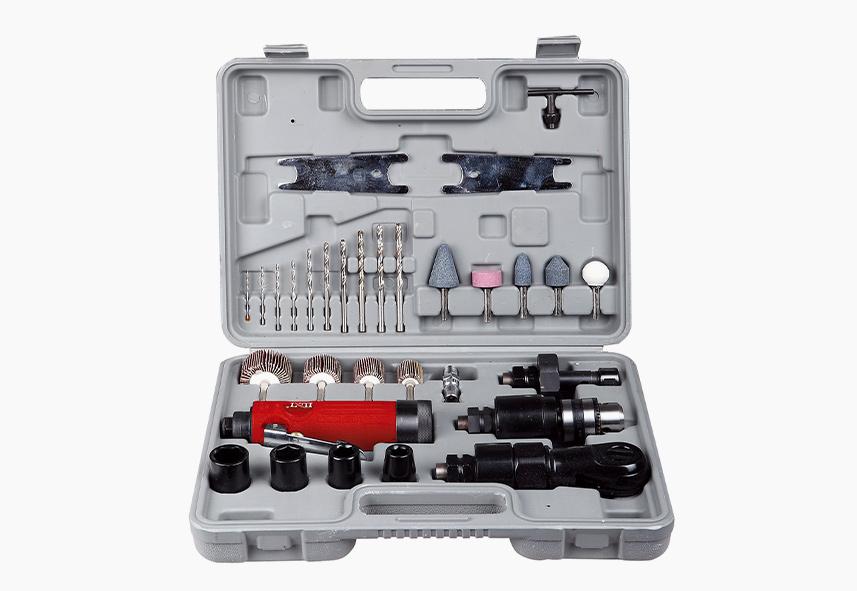Pneumatic tools are generally used as portable tools and require small and light weight. Therefore, this goal is achieved through rationalization of the structure, high-precision processing of the shape, strict material selection, and strict heat treatment. Compared with electric tools, pneumatic tools have the following advantages:
Comparison of work ability:
1. Both provide a variety of different working methods, such as: rotation, reciprocation, swing, impact, etc.
2. Speed adjustment and output power adjustment are simple. The operation of the air supply valve handle and adjustment of the regulating valve can be carried out very simply.
3. Pneumatic tools can provide more levels of choices in the speed range, from 100RPM to 70,000RPM.
4. The output power is large according to the ratio of weight to volume. In the case of the same output, it is smaller and lighter than the power tool.
5. There is no heat and overload failure. Pneumatic tools are more suitable for working for a long time without heat generation. Even if the compressed air engine is overloaded, the tool just stops rotating. Once the overload is removed, the tool will resume normal operation without affecting the tool. Any failure will occur.
6. In terms of reciprocating operation, pneumatic tools use piston motion, while electric tools are converted by cam wheels. In contrast, pneumatic tools have more advantages.
Including environmental suitability and economy, pneumatic tools are also very advantageous. Click the link below to learn more: air tools.



